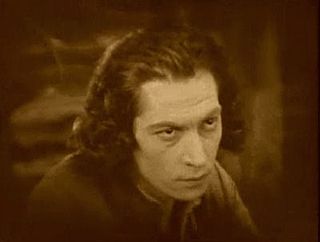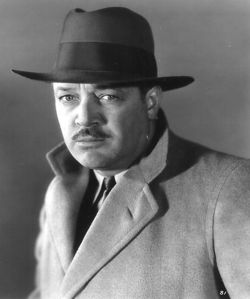Related Research Articles

Sol Wurtzel was an American film producer.

Frank Faylen was an American film and television actor. Largely a bit player and character actor, he occasionally played more fleshed-out supporting roles during his forty-two year acting career, during which he appeared in some 223 film and television productions, often without credit. He received a star on the Hollywood Walk of Fame in 1960.
John McGuire was a film actor during the period from the 1930s to the 1950s. In many of his early films he was a leading man; however, later in his career he was forced to play bit parts. McGuire appeared in Steamboat Round the Bend (1935); Charlie Chan at the Circus (1936);The Prisoner of Shark Island (1936); Stranger on the Third Floor (1940), sometimes thought Hollywood's first film noir; The Invisible Ghost (1941); Sands of Iwo Jima (1949); and Where the Sidewalk Ends (1950).

Francesco Giuseppe "Frank" Puglia was an Italian-American film actor. He had small, but memorable roles in films including Casablanca, Now, Voyager and The Jungle Book.

Mantan Moreland was an American actor and comedian most popular in the 1930s and 1940s. He starred in numerous films. His daughter Marcella Moreland appeared as a child actress in several films.
H. Bruce "Lucky" Humberstone was a movie actor, a script clerk, an assistant director, working with directors such as King Vidor, Edmund Goulding and Allan Dwan and, ultimately, a director.

Hank Mann was a comedian and silent screen star who was the last surviving member of the Keystone Cops. According to fellow actor and original member of the ensemble Edgar Kennedy, Mann was the originator of the idea for the Keystone Cops.
Leslie Arliss was an English screenwriter and director. He is best known for his work on the Gainsborough melodramas directing films such as The Man in Grey and The Wicked Lady during the 1940s.

William Stanley Blystone was an American film actor who made more than 500 films appearances between 1924 and 1956. He was sometimes billed as William Blystone or William Stanley.

Holmes Herbert was an English character actor who appeared in Hollywood films from 1915 to 1952, often as a British gentleman.

Paul Harvey was a prolific American character actor who appeared in at least 177 films. He is not to be confused with Paul Harvey the broadcaster.

Kane Richmond was an American film actor of the 1930s and 1940s, mostly appearing in cliffhangers and serials. He is best known today for his portrayal of the character Lamont Cranston in The Shadow films in addition to his leading role in the successful serials Spy Smasher and Brick Bradford.

George Henry Irving was an American film actor and director.
Charles G. Clarke ASC an American cinematographer who worked in Hollywood for over 40 years and was treasurer and president of the American Society of Cinematographers.

William M. Newell was an American film actor.

William Harris Ruhl was an American character actor of the 1930s, 1940s and early 1950s.

Sarah Edwards was a Welsh-born American film and stage actress. She often played dowagers or spinsters in numerous Hollywood movies of the 1930s and 1940s, mostly in minor roles.

Charles Williams was an American actor and writer. He appeared in over 260 film and television productions between 1922 and 1956. He also worked as a writer on 30 films between 1932 and 1954.
References
- ↑ Lombardi p.340